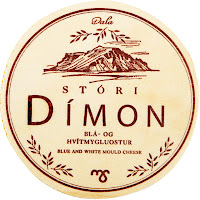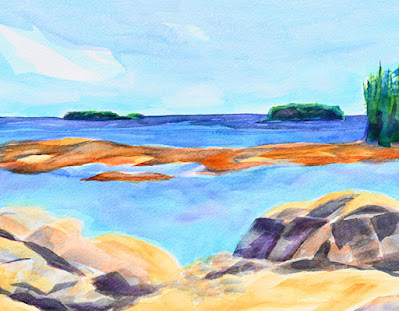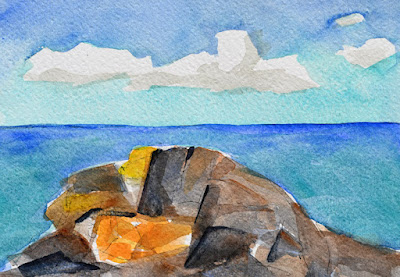Knotwood Dancing by Marks Light seen from the turnout view point before Sand Beach in Stonington, Maine,
where John Marin painted about a hundred years ago, and as sign notes this, painted plein air on June 20, 2024, 12" x 9" (w x h), Daniel Smith,
Schmincke Horadam, and Winsor & Newton watercolors, selected for
light fastness and permanence, and Uniball waterproof fade proof ink on
140 lbs. Fabriano Artistico cold press rough 100% cotton extra white
watercolor paper, framed.
$400
John Marin Sign at the Turnout - Mark Island in the Background
"John Marin, 1870-1953, one of the nation's preeminent artists,
painted some of his finest works in Stonington. Abstract as they are, one can
clearly see in the painting that the artist spent profitable hours at the Sand
Beach roadside turnout, looking at the very special scenery including Mark Island.
His painting of Mark's Island is one of the treasures of the Portland Museum of
Art.
Marin rented at Sand Beach and in Stonington before he moved
on downeast to Addison.
At the entrance to the waterway known as the Thoroughfare,
stands Mark Island Light. First lit on New Year's Day of 1858, this is the
welcoming beacon at Deer Isle's front door. In 1998 Island Heritage Trust took
title to Mark Island as a wildlife preserve and the U.S. Coast Guard agreed to
maintain the light itself."
Deer Isle Series: Mark Island Lighthouse
John Marin (1870–1953) American
Watercolor on paper, 22" x 17" (w x h), 1928
Portland (Maine) Museum of Art
Gift of Mr. and Mrs. John Marin, Jr.
Our art group repeatedly rented the house where John Marin stayed at Sand Beach for two weeks in the fall and painted there.
























































